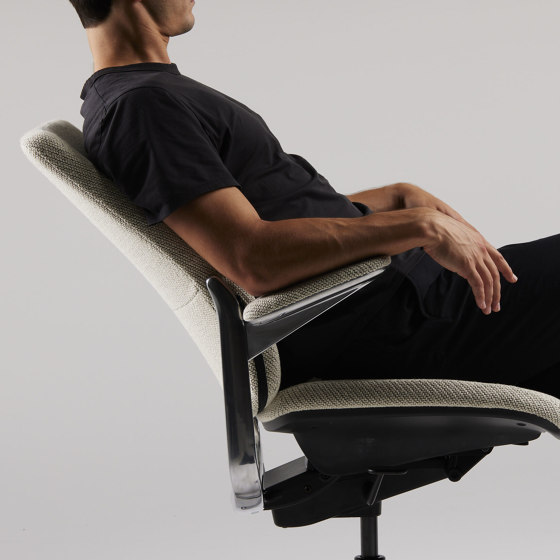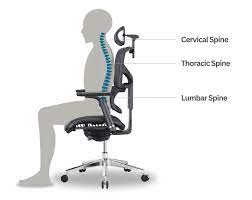

Have you ever noticed yourself slouching on your couch or hunching over your desk without even realizing it?
You are not alone.
Our modern-day furniture, though often stylish and comfortable, might be doing more harm than good when it comes to posture.
In fact, the very design of your furniture could be contributing to a widespread issue known as Forward Head Posture (FHP).
But how exactly does this happen?
Let us explore the ins and outs of how the design of your favorite chair, desk, or sofa might be sneakily causing you to develop FHP, and why it is a growing problem in today’s sedentary lifestyle.
Article Index:
- What is Forward Head Posture (FHP)?
- The Link Between Modern Furniture and Forward Head Posture
- How Poorly Designed Office Chairs Cause FHP
- The Role of Sofas and Couches in Developing FHP
- Desks and Workstations: A Major Contributor to FHP
- Recliners and Relaxation Chairs: Are They as Comfortable as They Seem?
- The Science Behind How Furniture Affects Your Spine
- Conclusion: How Does Furniture Design Lead to Forward Head Posture?
What is Forward Head Posture (FHP)?
Before we dive into how your furniture might be causing FHP, let us first understand what FHP actually is.
Forward Head Posture occurs when the head is positioned in front of the spine rather than sitting directly above it.
Ideally, your ears should be in line with your shoulders when standing or sitting with good posture. However, with FHP, your head leans forward, putting strain on the neck, shoulders, and upper back.
This might not sound like a big deal at first, but over time, FHP can lead to chronic pain, reduced mobility, and even long-term spinal issues.
Now, let us dig into how your furniture plays a role in all of this.
The Link Between Modern Furniture and Forward Head Posture
Modern furniture—while sleek and comfortable—was not always designed with ergonomics in mind.
Furniture that promotes lounging, hunching, or sitting for long periods can subtly encourage poor posture.
As someone who has spent countless hours sinking into plush sofas or slouching at a desk, I can personally attest to how quickly bad posture becomes a habit.
And that is where the trouble with FHP begins.
We spend so much time sitting, working, or relaxing on poorly designed furniture that our bodies start to adapt to these awkward positions.
Over time, the natural alignment of our spine shifts, with the head gradually moving forward, creating the dreaded forward head posture.
How Poorly Designed Office Chairs Cause FHP?
Let us now talk about office chairs.
For many of us, working from home or spending long hours at the office has become the norm.
Yet, despite sitting for hours on end, the design of most office chairs is far from ideal. In fact, many office chairs encourage a forward-leaning posture that places immense strain on the neck and spine.
The lack of proper lumbar support is one of the biggest culprits.
Without a chair that supports the natural curve of your lower back, your body tends to compensate by leaning forward, which causes your head to jut out.
This subtle shift eventually leads to poor neck posture. Furthermore, armrests that are set too high or too low can also contribute to poor posture, causing you to slouch or hunch.
A 2019 study published in the Journal Work found that poorly designed office furniture can significantly increase the risk of developing musculoskeletal disorders, including FHP.
The study emphasized that ergonomic improvements in office chairs, such as better lumbar support and adjustable features, could reduce the risk of poor posture.
But until those improvements are implemented, poorly designed chairs remain a primary source of FHP for office workers.
The Role of Sofas and Couches in Developing FHP
Now let us move to one of the most beloved pieces of furniture in the home: sofas and couches.
We often associate sofas with relaxation—after a long day, sinking into a cushy couch feels amazing. But here is the problem: most sofas are designed for comfort, not posture.
Think about the last time you lounged on your couch watching TV or reading a book.
Chances are, you slouched back, craned your neck forward to see the screen, and unknowingly put your body in a poor alignment.
This relaxed, forward-slumping position not only affects your lower back but also forces your head into an unnatural forward position, leading to nerd neck over time.
Sofas with deep cushions or those that are too soft do not provide the support your spine needs to maintain good posture.
As you sink into the cushions, your body compensates by hunching forward, which contributes to the development of FHP.
In fact, a study published in the Journal of Bodywork and Movement Therapies highlighted that deep-seated furniture contributes to poor postural habits, especially when combined with prolonged sitting.
This is particularly problematic for people who spend long periods watching TV, reading, or using their phones on these types of sofas.
Desks and Workstations: A Major Contributor to FHP
Desks and workstations are another significant source of FHP, particularly when they aren’t properly adjusted to the individual’s height or body type.
In my personal experience, I have worked at desks that were either too low or too high, forcing me to crane my neck to look at my computer screen. This seemingly minor adjustment actually played a huge role in encouraging poor posture.
When your desk height is incorrect, you end up leaning forward to reach your keyboard or see your screen.
This unnatural positioning causes your head to move forward in relation to your shoulders, which, over time, leads to forward head posture.
Furthermore, the use of laptops exacerbates the issue, as many people tend to hunch over them while working.
A report published in Ergonomics emphasizes the importance of proper desk ergonomics in preventing forward head posture.
It suggests that adjustable desks, proper monitor placement, and ergonomic accessories can greatly reduce the strain on the neck and shoulders, but in the absence of these improvements, poorly designed workstations remain a key contributor to FHP.
Recliners and Relaxation Chairs: Are They as Comfortable as They Seem?
Recliners and relaxation chairs are often viewed as the epitome of comfort. However, they may also be sneaky contributors to poor posture.
These chairs are designed to promote relaxation, but they often encourage slouching and poor spinal alignment.
When reclining in one of these chairs, your lower back may lose its natural curve, and your neck may crane forward.
In my own experience, spending hours in a recliner with my head pushed forward while watching TV caused noticeable strain on my neck and upper back.
It is no surprise that over time, these comfortable seats can result in turtle neck posture.
Recliners that are too soft or don’t offer enough lumbar support force the body into awkward positions.
A study published in Applied Ergonomics found that furniture promoting long periods of sitting in poor alignment, such as recliners, can contribute to postural issues like FHP.
The Science Behind How Furniture Affects Your Spine
To understand the full impact of furniture design on vulture neck posture, we need to consider how the spine and muscles work together.
When your spine is properly aligned, your head sits squarely over your shoulders, and your neck muscles work in harmony to support the weight of your head.
But when your furniture encourages slouching or leaning forward, the muscles in your neck and upper back must work harder to hold your head up.
Over time, this extra strain can lead to muscle imbalances and cause the spine to lose its natural alignment.
Studies, like one published in The Spine Journal, have shown that prolonged periods of poor posture can lead to structural changes in the spine, such as cervical kyphosis, where the natural curve of the neck is reversed.
In short, when you repeatedly sit in furniture that forces your head forward, your muscles and spine adapt to this position, eventually leading to forward head posture.
How Does Furniture Design Lead to Forward Head Posture?
So, how does the design of your furniture cause forward neck?
As we have explored, modern furniture is often designed for comfort, not posture.
Whether it is a cushy sofa, a poorly designed office chair, or a relaxing recliner, these pieces of furniture encourage slouching, hunching, and leaning forward—all of which place undue strain on the neck and spine.
Over time, this strain causes your head to move forward in relation to your shoulders, leading to the development of forward head posture.
Without proper lumbar support, ergonomic desks, or mindful posture habits, our bodies slowly adapt to these poor positions, resulting in chronic pain and structural changes in the spine.
In conclusion, while furniture design may seem harmless, it plays a significant role in encouraging forward head, particularly in today’s sedentary lifestyle.
So, the next time you sit down on your sofa or settle into your office chair, take a moment to consider how your posture might be affected.
References:


